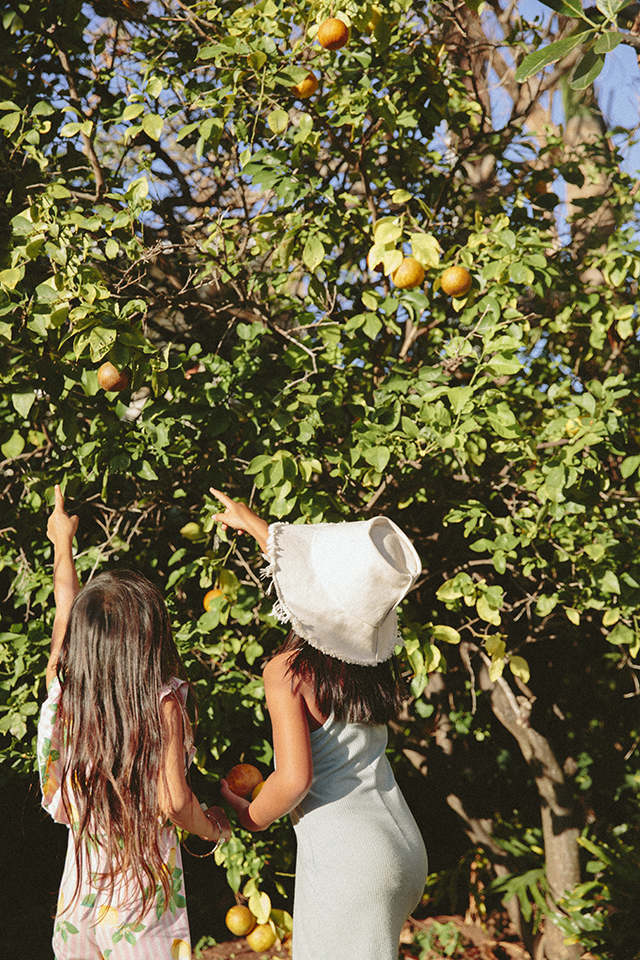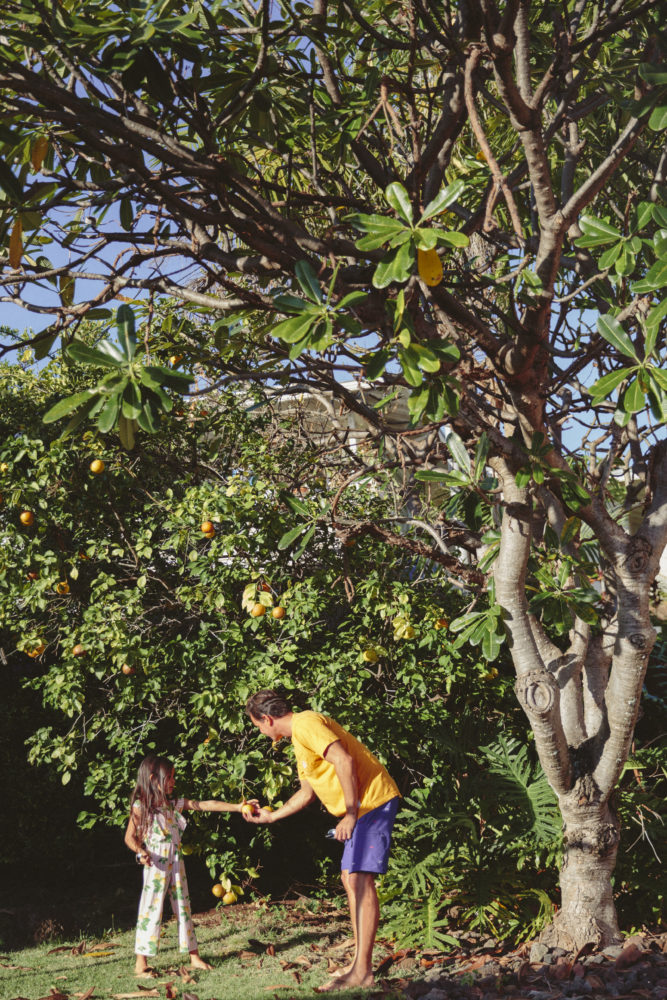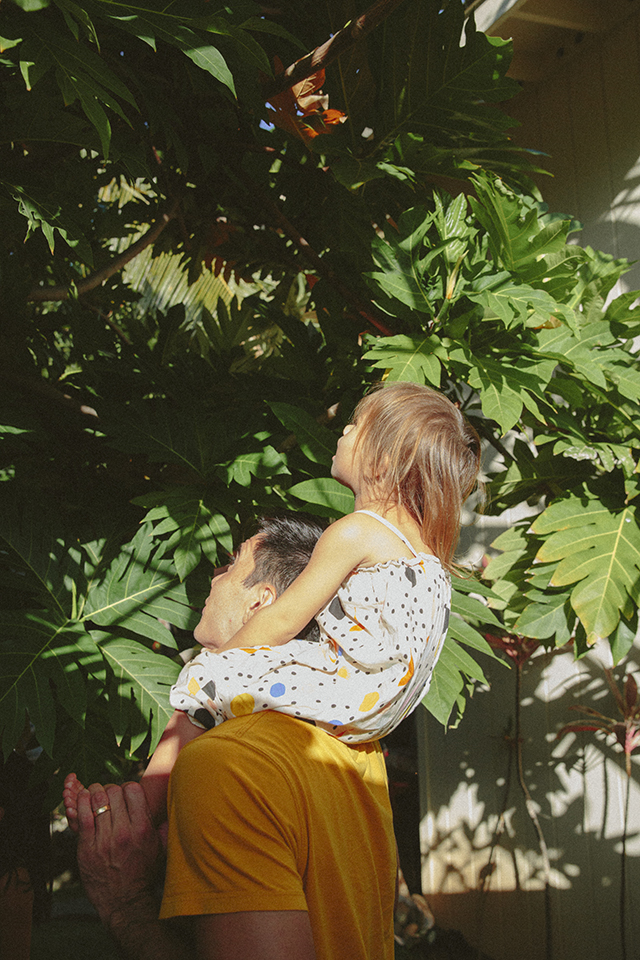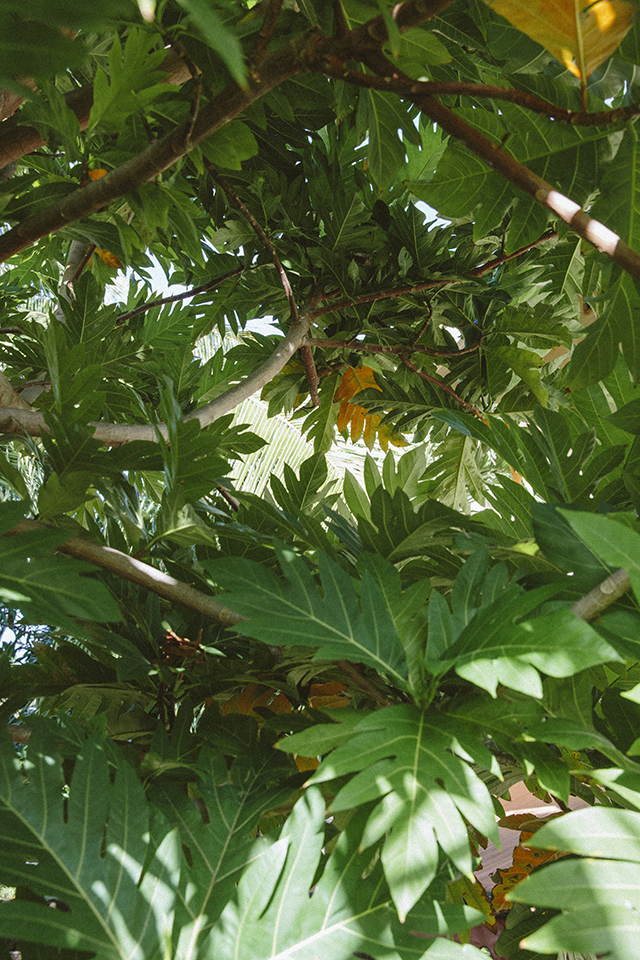For floral artist Tamara Rigney, Treehooo is a love letter to—and a rescue plea for—Hawai‘i’s urban forests.
Tamara Rigney is thinking about trees. There’s a dreamy, distant look in the botanical boutique owner’s eyes as she recalls times spent beneath the arching, enveloping embraces of Kapi‘olani Park’s gnarled kiawe tree. “I can get twice as much work done when I’m just at the park with my computer,” Rigney says, who runs the sister floral shops Paiko Hawai‘i and Pua Hana.
Sometimes, she’ll head there for a morning jog along the shady tree tunnel of Paki Avenue. Or she’ll skip the office, or her shops, or whatever city errands she has on her too-full to-do list, and instead drive from her home in Pālolo to Waikīkī to lounge or work or just be.
Immersed in the cooling calm of the park’s ethereal flora, alone in the dappled shadows cast by the foliage from who-knows-how-old branches, there’s a peace found beneath the trees. What a wonderful world it would be, for all of us, if there were more of them.
Unfortunately, the opposite is happening: Honolulu’s trees are vanishing. A 2015 study, a dual effort by the Division of Forestry and Wildlife and nonprofit Smart Trees Pacific, found that 5 percent of Honolulu’s tree cover was lost between 2010 and 2015.
The loss is even more significant if you consider that the city’s tree cover—that layer of branches and leaves that create a shady roof over the land and sidewalks—only covers about one-third of the space available for tree cover, which means there are more opportunities for trees to be planted, and more canopy-covered spaces created.
Trees cool spaces with shade, release water through their leaves, and clean the air by absorbing pollutant gases and trapping particulates on their bark. But as lawns become driveways, yards are replaced for more housing, and road verges grow weeds, direct sunlight hitting paved surfaces increases the heat of the city and the air becomes dusty.
But, in some neighborhoods like Kalihi and Pālolo, sun-drenched sidewalks far from the comforting cover of nearby trees means a shady stroll is hard to find.
The sprouting of Rigney’s idea started close to home, in Kaka‘ako, the rapidly developing neighborhood of her day job at Paiko Hawai‘i, where Rigney is co-founder and botanical designer. Working in the neighborhood day in and day out gave her a front-row seat to the recent rapid development.
New buildings, new stores, new restaurants—but where were the new trees? In the midst of all this capital being spent and labor being invested to create a hip, urban oasis, Rigney wondered, shouldn’t that also include some shade? Noticing trees being overlooked in Kaka‘ako opened her eyes to it in the rest of the city, too.
“It just became really apparent to me how few trees Honolulu has,” Rigney says. “I was like ‘What’s up with this neighborhood? They spent all this money redeveloping this whole block and there’s no trees!’”
At the same time, Rigney noticed that people in different neighborhoods were cutting down their trees and not planting any new ones.
She started attending board meetings of Trees for Honolulu’s Future, which she found was doing a great job through projects like working with the city to improve tree wells, helping to place more trees and planters, and mapping trees across the city in potential planting locations. While they were making some massive impacts, Rigney saw the opportunity for her to make a difference in a different way.
“I realized there was no one really talking to the public or educating people about what was going on,” she says.
As part of the grant, the team seeded their first project in the summer of 2020: a Treehooo advocacy campaign. Rigney knew she wanted to tackle residential tree loss cited, which the Smart Trees study identified as making up 40 percent of Honolulu’s total tree loss.
That meant the campaign needed to reach residents and property owners. They launched radio ads as “the voice of trees” spouting the benefits of planting new ones and not chopping existing ones, which ended up reaching 900,000 listeners. They partnered with local artist Druscilla Santiago to produce charming video, branding, and web graphics.
And, they built the Treehooo website into a one-stop shop for resources, like how to select and plant the right tree for your home, information on the benefits of trees, and tips on navigating city laws, street trees, and tricky root issues.


With the Kaulunani Grant period over, Rigney hopes to continue speaking directly to the public by running one outreach campaign or project a year.
For 2021, the Treehooo! team partnered with artist Wyatt Hersey to create a vibrant, tree-centric mural above the Pua Hana shop in Kaimukī. The Treehooo! Instagram account also regularly features facts and information from arborists and stories of trees beloved by Honolulu residents.
Whether it’s showcasing a 100-year avocado tree in a Kaimukī backyard that provides shady space for its owners’ alfresco hangs or a small lemon tree in Nu‘uanu that brings joy to a home through the soothing sound of the wind in the leaves, the Treehooo focus is firmly rooted in an intention to inspire.
Like the blooms and creations at Paiko and Pua Hana, the Treehooo team’s work reminds Honolulu of the beauty in nature—whether that be trees or flowers—and how much better everyone’s lives are because of them.
“It’s uplifting to see that we can change public opinion,” Rigney says. “This is the first step.”





